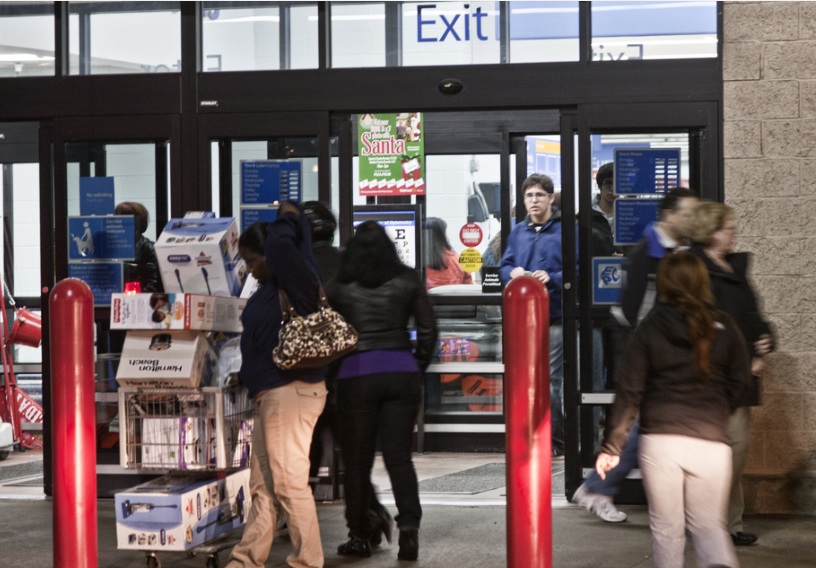
This is a major development and one that is going to be fun to watch play out.
[aditude-amp id="flyingcarpet" targeting='{"env":"staging","page_type":"article","post_id":515756,"post_type":"guest","post_chan":"none","tags":null,"ai":false,"category":"none","all_categories":"mobile,","session":"D"}']While the announcement of the plan has received a fair amount of press, I haven’t seen a good analysis of why these traditionally fierce competitors have embarked on an unprecedented level of cooperation presumably in an area they consider a closely guarded state secret: sharing customer purchase data.
As the founder and CEO of Endorse, a next-generation offers platform for consumer brands in stores like Walmart and Target, I have spent the past two years working in the space. Here are a few reasons why I believe these particular retailers feel the urgency to do something like this now:
AI Weekly
The must-read newsletter for AI and Big Data industry written by Khari Johnson, Kyle Wiggers, and Seth Colaner.
Included with VentureBeat Insider and VentureBeat VIP memberships.
- Cost reduction: Scale-based, low-margin industries like that of modern traditional retailing, are constantly looking to their value chain to wring out any cost efficiencies they can find. Walmart is the king of forcing brands to conform to their EDLP strategy (Everyday Low Pricing) and to alter everything from package sizes to delivery methods to pricing and promotion strategies in order to get Walmart shelf space. Every dollar these companies save drops directly to the bottom line. As you can see from the chart below, 5% to 6% EBIT is the norm — eliminating 1%-2% transaction fees for credit card payments is a significant savings.
- Revenue growth: As you can also see below, revenue growth in this industry is hard to come by. I see three opportunities for revenue growth here: increasing basket sizes (giving incentives for buyers to spend more when they shop), increasing trip frequency (giving incentives to shop one more time a month), and increasing exposure to brand trade dollars associated with product-level offers and increased customization. By tying purchase behavior and history to the mobile phone, all of these are now on the table, and all are multibillion dollar opportunities.
- Customer behavior is changing: Shoppers are now far more tech-savvy than the retailers, and the retailers know it. They use their mobile phones while shopping and they are more deal-driven than ever before. They are busy, always on the go, and are shopping in more short-burst trips and spending less per trip. The planned, once a week major shopping trip that Walmart and Target have both dominated for years, is happening less frequently. Retailers need to be more real-time and in-tune to making it more convenient for a consumer to go to one place over another.
- Traditional offers like coupons are broken: Brands spend $5 billion a year in coupons and another $130 billion in trade promotions money that is allocated from brands to stores to incent purchases of their brands over another. Coupons are 125 years old, and their form and function haven’t really changed much over that time. Coupons are most often used by a brand’s least desirable customers, and brands do not have a good way today to connect with their most valuable and their potentially most valuable customers. I believe that offer innovation will take years if brands rely solely on point-of-service (POS) upgrades and integration.
- It’s all about customer data … outside of their 4 walls: These retailers already have an immense amount of data on their customers, and they aren’t using it nearly as well as you would think. But they only “know” those customers that use a credit card or a store loyalty card. If you pay by cash, those transactions are invisible to the store as they can’t tie your purchase to your store id profile. When you use their payment method, they know everything you bought, how much you spend, and how frequently you shop. THE BIGGEST RETAILER BLIND-SPOT IS THEIR SHARE OF WALLET — how much you spend at Target when you are not shopping at Walmart. The holy grail for Walmart is to know 1) that you also shop at Target and 2) what you buy at Target. This is the biggest question: Is Target really going to let Walmart see their joint customer data? I doubt it.
- Not all data is created equal: There are different kinds of data when it comes to the purchase information MCX will collect. To keep things simple, there are 3 levels of data: There is the “store level data” (I spent $25 at Target and $100 at Walmart), “basket-level data” (I spent $5 on Pampers, $5 on Pepsi, and $15 on Tide at Target and I spent $25 on Quaker products, $50 on Purina dog food, and $25 on Gatorade at Walmart), and “purchaser data” (I live in Indianapolis and spend $6,000 a year on groceries, I have two kids, and I have a new iPhone.)
- Multiple payment schemes mean innovation will stall for years: Consumers want to use whatever payment method they want, wherever and whenever they shop. I don’t think it is realistic to expect consumers to check 4-5 different apps to view their rewards, offers, and receipt history.
- Popular mobile payments service Square has a long road to be integrated where POS systems are tightly coupled with inventory management and, therefore, profitability: I think Square is awesome and its recent Starbucks deal is one of the Valley’s best business development deals in the past 10 years. Starbucks has a limited menu and the value is more in the speed of service and cost savings than it is in inventory management.
I am putting aside the research that shows that most joint ventures by large companies fail for numerous structural and oversight reasons (Hulu is a recent example of one that has succeeded).
[Top image credit: K2 images/Shutterstock]
VentureBeat's mission is to be a digital town square for technical decision-makers to gain knowledge about transformative enterprise technology and transact. Learn More